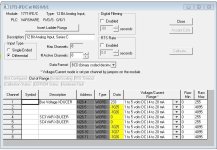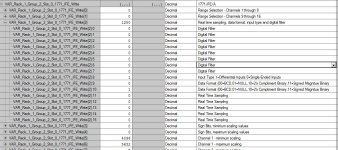That's a bit of a head-scratcher ! A agree that somebody was trying to enforce a data limit on something, but I think the AND and he BTD are unnecessary.
The configuration for the analog module indicates that N26:4 will contain a value between 0 and 255, but the module has been set up to encode it in Binary Coded Decimal (BCD), where each 4 bits represents one digit. This was standard in PLC-2 controllers so you see PLC-5's sometimes set up to do the same.
The bitwise AND just enforces that only the first 10 bits can be used. I don't know why they did that, because all it appears to do is limit the value that can pass through to 299. Bits 09 and 10 allow a "0", "1", or "2" in the first digit, while the true bits 07 through 00 allow any value from "0" to "9".
Code:
N26:4 = 233 = 0000_0011_0011_0011
1023 = 0000_0011_1111_1111
AND-----------------------------------------
0000_0011_0011_0011 = 233
Then they convert from BCD to an ordinary binary Integer, so the value is still decimal 233.
Then they use a Bit Field Distribute to move the binary integer bit pattern four bits to the left, which is equivalent to multiplying by 16.
They moved eight bits, which is not more than necessary because the maximum value could only have been four bits long (255).
So the practical result is that they ended up with a value in N7:35 in ordinary two's complement binary encoding, of 233 x 16 = 3728.
If you are actually using the 1771-IFE and will be keeping it in BCD format, the simplest thing to do is use an FRD and MUL instruction in the ControlLogix.






